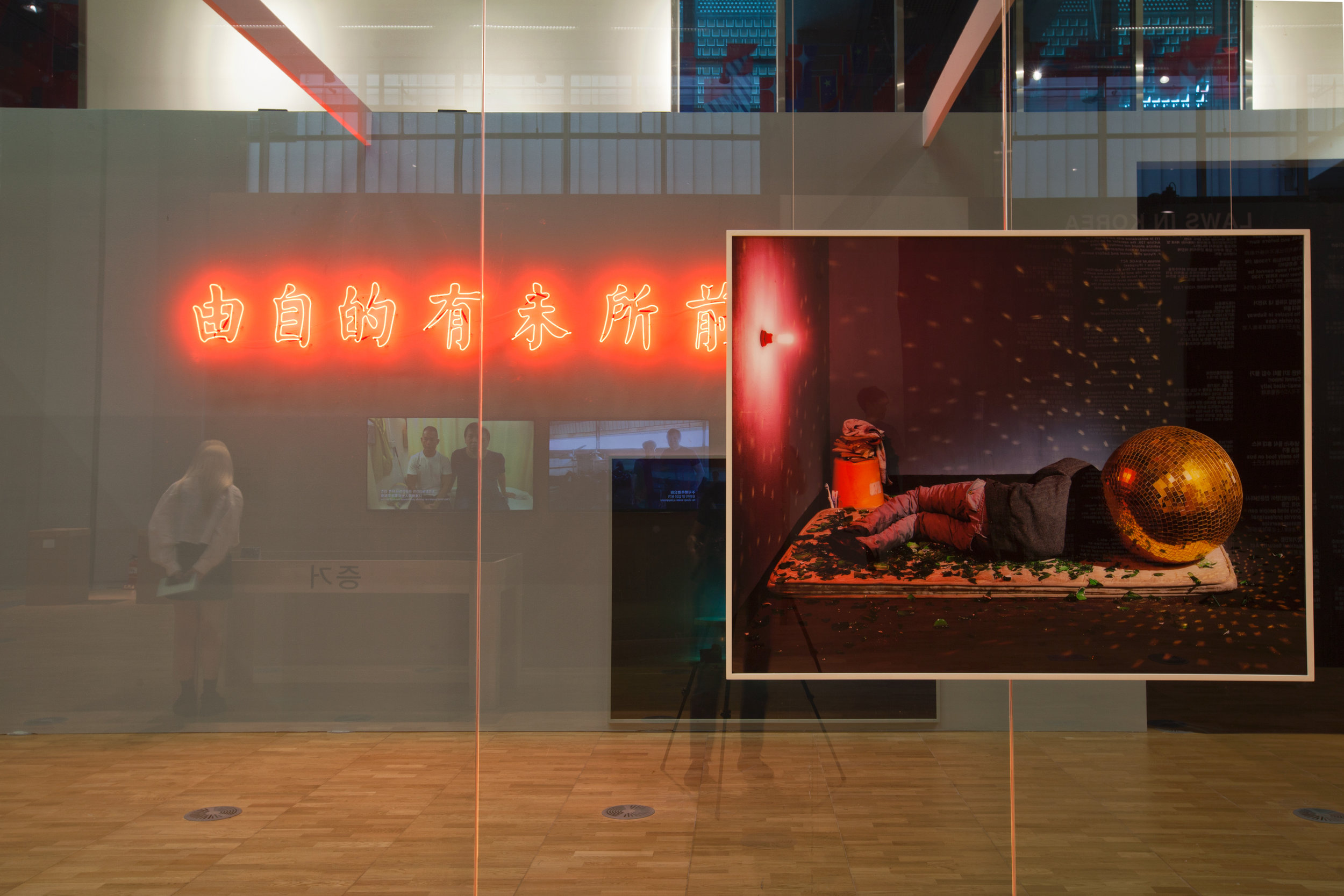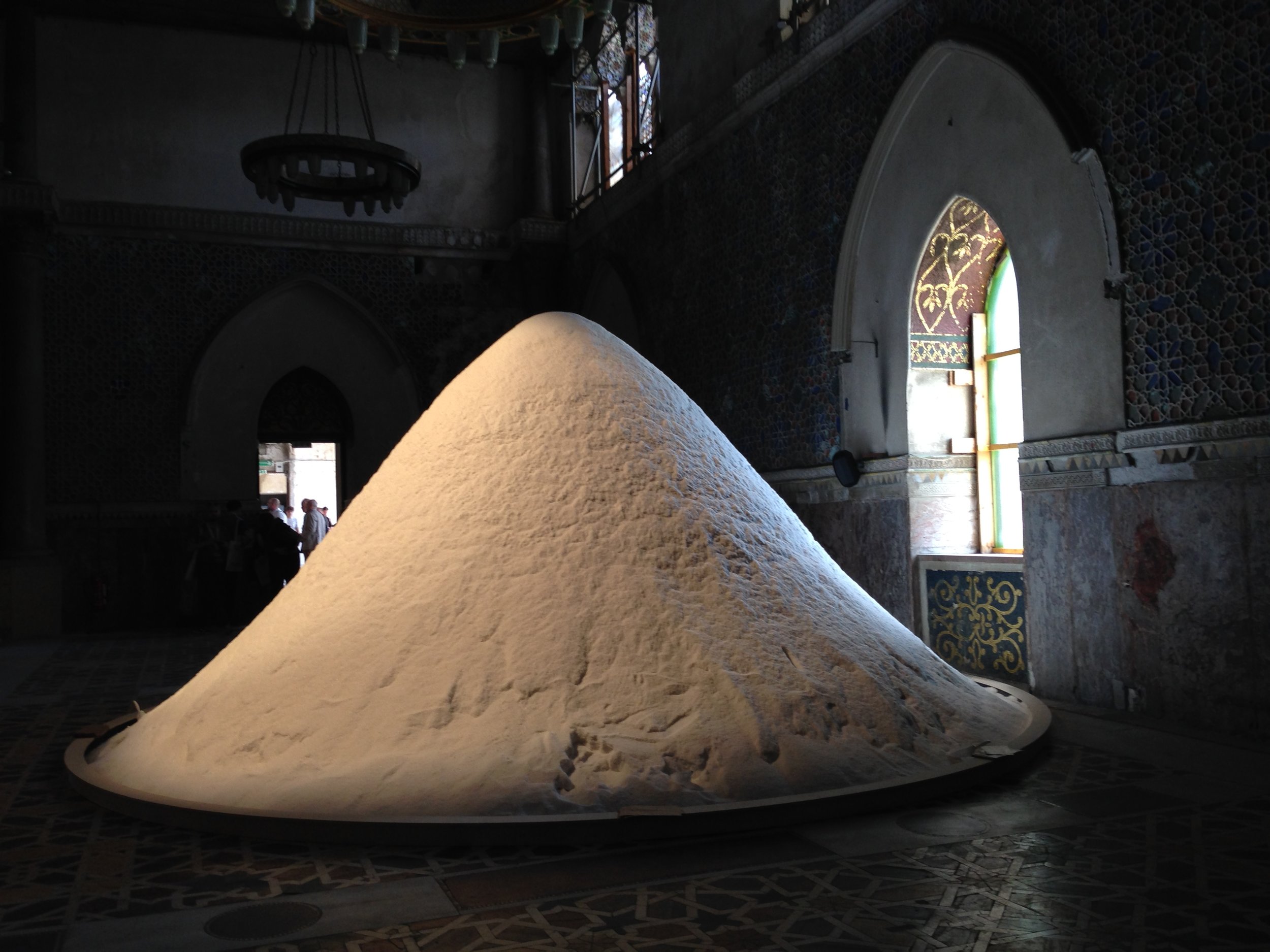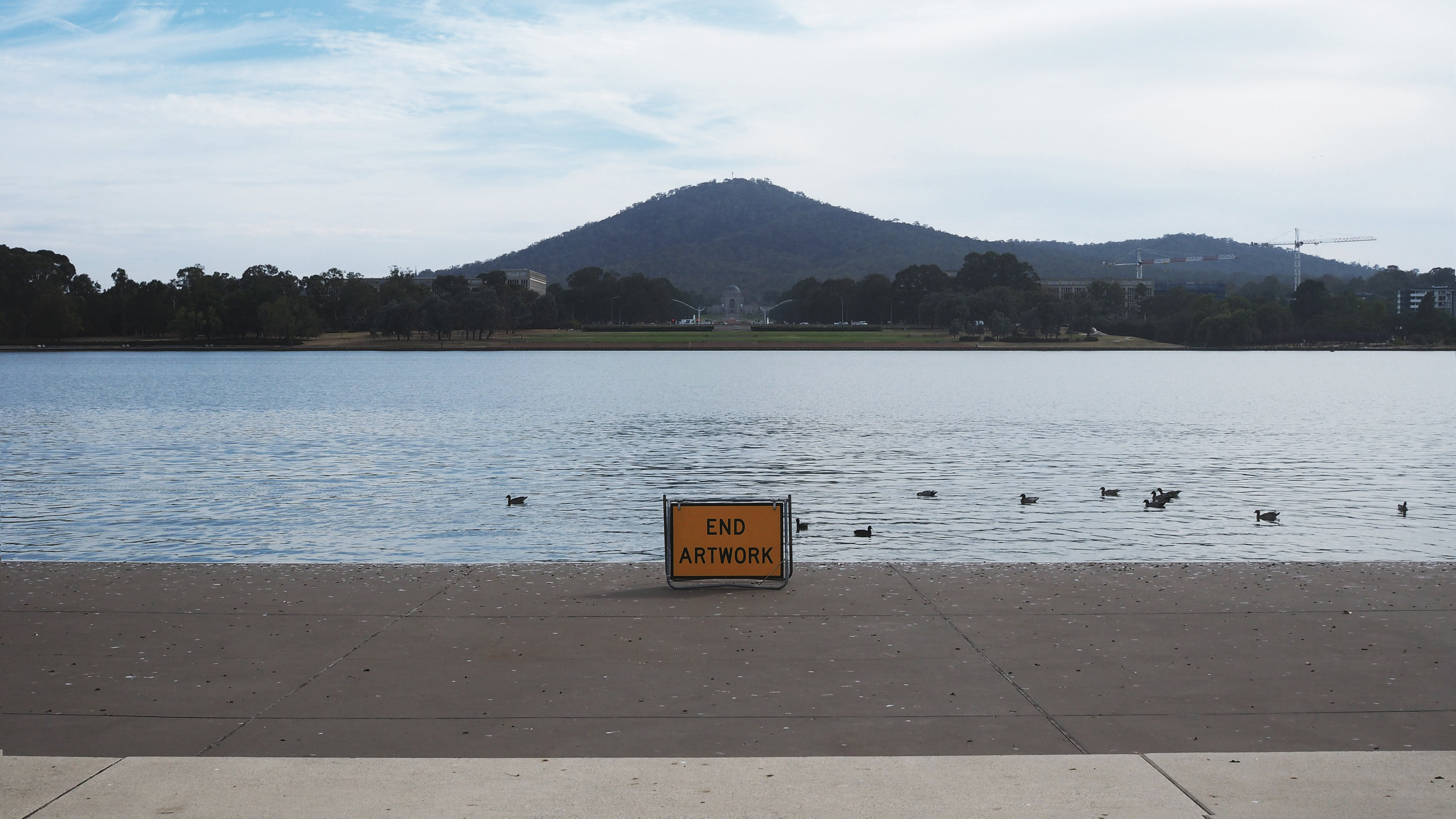This winter at the NGV International is devoted to the grand sweep of China’s history, from the ancient Zhou dynasty (1046–256 BCE) to the current generation of young artists. Until October, the gallery is home to three displays of Chinese art combining past and present. In defiance of the icy wind and rain outside, each display offers a variation on a central incendiary theme, balancing meditative stillness against explosive spectacle.
As I entered the warmth of the gallery on a late May morning, my eyes were drawn to a blaze of colour in Federation Court. ‘SO – IL: Viewing China’ (until 4 August), a glacial conflagration of pink, green, yellow and blue acrylic vitrines, designed by New York-based architects Solid Objectives – Idenburg Liu, rivals the bombastic splendour of Leonard French’s iconic stained-glass ceiling in the Great Hall. Yet it was the objects within these vitrines that captured my attention: Chinese white porcelain of the seventeenth to nineteenth centuries, and its European imitations, once valued for their monochrome purity but here rendered kaleidoscopic by the mirrored podiums in SO – IL’s luminescent cases, revealing qualities of surface and tone that might otherwise be missed.
Beyond the bustle of Federation Court, an entirely different atmosphere suffuses the blockbuster pairing of ‘Terracotta Warriors: Guardians of Immortality’ and ‘Cai Guo-Qiang: The Transient Landscape’ (until 13 October). Entry to this dual exhibition is gained through a dim passageway, with six screens along one wall playing a looped sequence of digital terracotta warriors dissolving and reforming in swirls of shimmering dust. A soundtrack of ethereal chime music recalls the resonant tones of Zhou bronze bells, cleansing the air of polluting influences. Overhead, a trail of porcelain starlings blackened with gunpowder signals Cai’s tutelary presence.
In the main exhibition chamber, after passing through two galleries filled with a dazzling array of Zhou, Qin (221–07 BCE) and Han dynasty (207 BCE–220 CE) treasures, visitors are confronted by eight terracotta warriors in two rows of perspex cases. As in ‘Viewing China’, mirrors are used to great effect: one is mounted behind each warrior, facing another on the back of the case in front to create a mutual reflection in which single figures are multiplied into ranks of identical officers, infantry, archers and bureaucrats, receding into a seemingly limitless optical void. Viewers, too, are reflected, inviting a comparison of clay and flesh in which the imposing stature of the warriors provokes a realisation of our own mortality and vulnerability to the passage of time.
Another parallel with ‘Viewing China’ can be found in Cai's two porcelain installations: Transience I (Peony), a mound of ceramic blossoms, and the 10,000 starlings of Murmuration (Landscape) (both 2019). Like SO – IL, Cai has saturated the white glaze of his starlings and peonies with iridescent bursts of colour, though, rather than the play of light on acrylic, he has deployed his signature mastery of gunpowder. Flowers and birds alike have been exposed to controlled explosions that have left them unharmed but coated with pigmented residue: charcoal black in Murmuration and a festive blend of red, green, yellow and blue in Transience. Cai used the same process to create the three ‘gunpowder paintings’ commissioned for this exhibition: broad expanses of silk and hemp paper scarred with calligraphic trails and crackling pulses which nevertheless, like the Buddhist deities in SO – IL’s vitrines, exude a meditative tranquility amid explosive light and colour.
The dialogue between ancient and contemporary is continued on the gallery's top floor with ‘A Fairy Tale in Red Times’ (until 6 October), a selection of work by 26 Chinese artists on loan from the White Rabbit Collection, Sydney. Many of these artists rival Cai in reputation and their work resonates just as powerfully with the first emperor’s disinterred armies. The slumped shoulders and resigned expressions of migrant workers replicated in resin for Zhang Dali's ‘Square’ series (2014), for example, offer a striking counterpoint to the impassive stoicism of the warriors, while the ragged pigeons tearing at their clothes are a far cry from Cai’s majestic flock of starlings. The display also includes rising stars like Cheng Ran, whose video work with French artist Item Idem, Joss (2013), lingers over the burning of cigarettes, handbags and other luxuries modelled in paper as offerings for the dead, voracious tongues of flame recalling Cai’s controlled explosions.
Yet the people and objects variously immortalised and immolated in these works are not proud warriors or emblems of a glorious heritage – they are the forgotten and overlooked, denigrated emblems of human greed and desire. This is the most incendiary aspect of all three displays: their shedding of new light on things that have long been hidden, ignored or denied.
Alex Burchmore, Melbourne






































